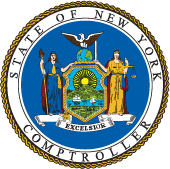Oversight and Monitoring of Municipal Water Systems
This report summarizes common findings from audits of 161 local government and 7 public authority water systems from January 2012 through May 2017. These audits identify deficiencies in financial management, including consistent overestimation of water revenues, incorrect billing, improper transfer of money between water and other funds, and insufficient internal controls and long-term planning. Many audits have also found other problems in water system operations, including significant losses as water travels from its sources to its users.
